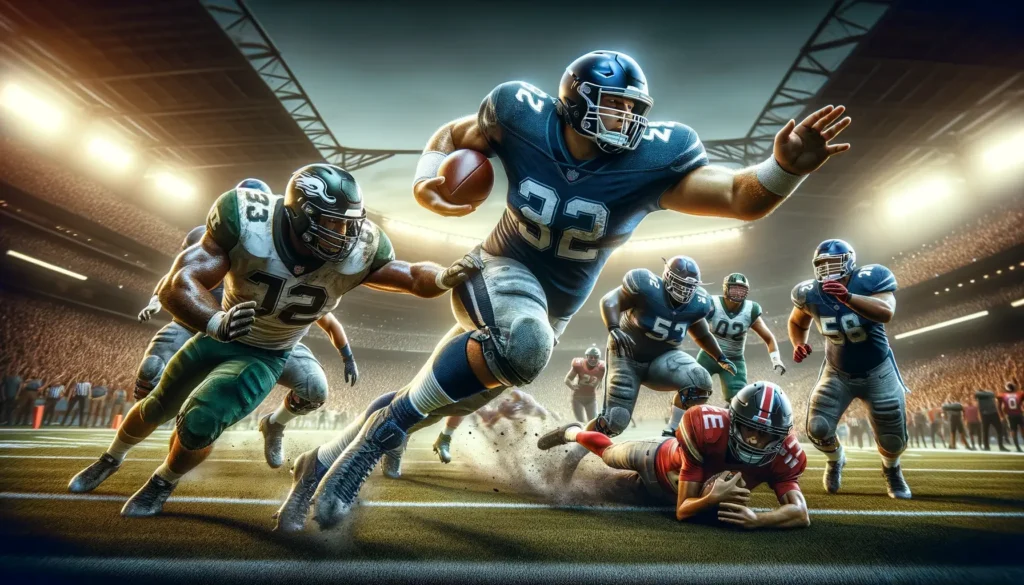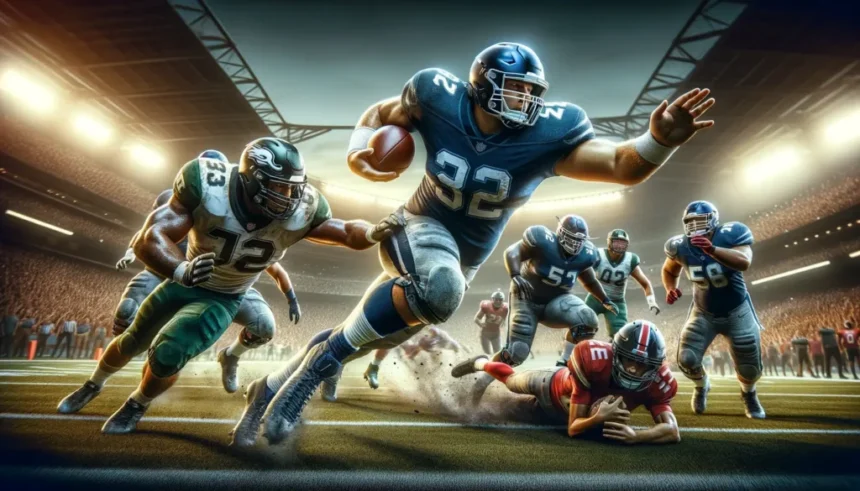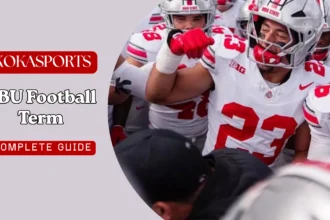What is a TFL in Football? Football is a game full of exciting plays, strategic moves, and crucial moments that can change the outcome of a game. One such important play is a Tackle for Loss (TFL). Though it might not always get the spotlight, a TFL is a significant defensive play that can have a major impact on a game. This article will explain what exactly a TFL is, why it matters, and how it affects a football game. Whether you are a die-hard football fan or just a casual viewer, understanding the significance of a TFL can help you appreciate the game on a deeper level.
What Does TFL Mean in Football?
A Tackle for Loss (TFL) occurs when a defensive player tackles the ball carrier behind the line of scrimmage, resulting in a loss of yards for the opposing team. This play showcases the defense’s ability to disrupt the offense and can significantly impact the momentum of the game. While often confused with a sack, which only applies to the quarterback, a TFL includes any tackle that causes a loss of yards, whether it’s the quarterback, running back, or any other ball carrier.

The Mechanics of a Tackle for Loss
TFLs usually happen when a defender, such as a linebacker or defensive lineman, penetrates the offensive line and tackles the ball carrier in the backfield. Achieving a TFL requires agility, strength, and the ability to anticipate or read the opposing team’s play. Defensive players aim to tackle for loss to disrupt running plays or short forward passes, often changing the course of an offensive drive.
Key Factors in Achieving TFLs
- Penetration: The defender must break through the offensive line quickly.
- Anticipation: Reading the play correctly to know where the ball carrier will go.
- Agility: Being able to move quickly to tackle the ball carrier before they reach the line of scrimmage.
Read More: How Many Quarters In Football Game? American Football Guide
TFL in Football Statistics
TFLs are a key metric in football statistics, highlighting a team’s defensive prowess. It’s a direct measure of how effectively a defense can disrupt the opposing team’s offensive strategy. In the NFL, TFL stats are closely monitored as they can indicate a team’s or player’s ability to control the line of scrimmage and impose defensive pressure.
Importance of TFL Stats
- Disruption: Indicates how well the defense disrupts the offense.
- Defensive Strength: Reflects the effectiveness of the defensive line and linebackers.
- Game Planning: Helps coaches understand which defensive players are performing well.
The Impact of TFL on Game Strategy
The occurrence of a TFL can significantly disrupt the opposing team’s offensive game plan. It creates longer yardage situations for the offense, making it harder to score or achieve a first down. TFLs can also shift the momentum of the game, boosting the defensive team’s morale while putting psychological pressure on the offense.
Strategic Advantages of TFLs
- Longer Yardage: Forces the offense into longer down situations.
- Momentum Shift: Can change the momentum in favor of the defense.
- Psychological Pressure: Puts pressure on the offensive players and coaches.

TFL in Fantasy Football: A Valuable Metric
In fantasy football, TFLs can contribute valuable points, making players who frequently make tackles for loss hot commodities. Fantasy league enthusiasts often track players known for high TFL numbers, as these stats can turn the tide in fantasy matchups.
Fantasy Football Tips
- Track TFL Leaders: Identify players with high TFL stats for your fantasy team.
- Defensive Strength: Focus on teams with strong defensive lines and linebackers.
Key Players Often Involved in TFLs
Linebackers and defensive linemen are typically the key players in executing TFLs. Their position and role on the field allow them to be in the best place to penetrate the offensive line and make tackles behind the line of scrimmage. Some NFL players have become famous for their consistent ability to record TFLs, becoming integral parts of their team’s defensive strategy.
Notable TFL Players
- Aaron Donald: Known for his exceptional ability to penetrate the offensive line.
- Khalil Mack: Frequently records TFLs with his strength and agility.
- Bobby Wagner: A linebacker with a knack for reading plays and making crucial tackles.
How Coaches Plan to Increase TFLs
Coaches employ various defensive strategies and formations to increase the chances of TFLs. This includes focusing on agility and penetration drills in training, as well as strategizing blitzes and defensive line movements to outmaneuver the offensive line.
Coaching Techniques
- Drills: Focus on drills that improve penetration and agility.
- Blitzes: Use blitzes to surprise the offense and create TFL opportunities.
- Film Study: Analyze opponents to anticipate plays and position players for TFLs.
The Historical Significance of TFLs in the NFL
TFLs have been a part of memorable moments in NFL history. Certain games and seasons have been defined by record-breaking TFL performances, highlighting the skill and impact of defensive players in the league.
Historic TFL Moments
- Record-Breaking Seasons: Players like J.J. Watt have set records for TFLs in a season.
- Game-Changing Plays: TFLs that have changed the outcome of important games.
TFLs in College Football vs. the NFL
While TFL is a significant stat in both college football and the NFL, there are differences in how it’s achieved and its frequency due to varying play styles and rules at each level. College football often sees more TFLs due to a wider variety of offensive styles and less polished offensive line play compared to the professional level.
Differences Between College and NFL TFLs
- Offensive Styles: College teams use more varied and experimental offensive plays.
- Player Development: College players are still developing, leading to more mistakes.
- Frequency: More frequent in college due to these factors.
Future of TFLs in Football Evolution
As football evolves, the significance and strategy around TFLs continue to adapt. Rule changes and shifts in offensive strategies can affect how defenses approach TFLs, making it an ever-evolving aspect of the game.
Future Trends
- Rule Changes: Potential rule changes could impact the frequency of TFLs.
- Offensive Innovations: New offensive strategies will require new defensive adaptations.
- Training Techniques: Continued evolution in training to improve TFL stats.
Conclusion – What is a TFL in Football
In conclusion, TFLs are game-changing plays that can completely swing momentum. When a defense is constantly tackling ball carriers in the backfield for losses, it disrupts the timing of the opposing offense. This leads to rushed throws and sacks of the quarterback, resulting in fumbles or interceptions. TFLs also force offenses into more obvious passing situations, allowing defensive backs to key in on receivers running routes. The combination of lost yardage, turnovers, and punts gives the ball back to the offense with great field position. TFLs lead to a cascade of events that flip field position and facilitate takeaways – exactly the kind of turnover impact that wins football games.
FAQs
What is a TFL in football?
A TFL, or Tackle for Loss, is when a defensive player tackles an offensive player behind the line of scrimmage, causing a loss of yards.
How do TFLs impact a game?
TFLs disrupt offensive drives, pin the offense deep, and flip field position, creating advantageous situations for the defense.
Which defenders record the most TFLs?
Defensive linemen, linebackers, and aggressive defensive backs are the players who most frequently record TFLs.
Understanding TFLs can deepen your appreciation for the defensive side of football and highlight the strategic battles that unfold on the field.




